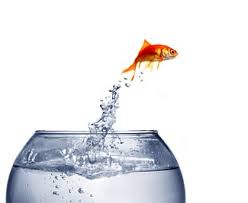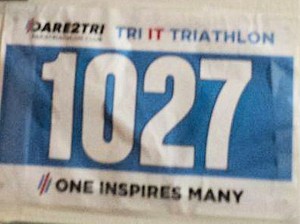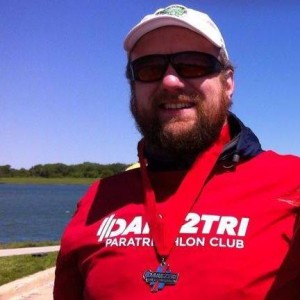
Years ago, I was told by a coach ‘the name on the front is more important than the name on the back’. While that particular program has gone the traditional route of having names on the back, there are still some large programs that don’t. And while not everyone has their last name on their back or butt as part of a Tri kit, the same holds true in participating as an athlete with disabilities (AWD). You’ve got an organization or company on the front of your gear, and you need to keep that in mind.
While there are two separate pieces, I see them as being interconnected. Whether it’s for yourself, or for the organization/company that’s on your gear, you need to keep the bar raised.
The first piece is participating in an honest and ethical way while you’re out there. That organization/company has put their reputation behind you, and thus everything that you do reflects on them. If you want to see what can happen when you don’t participate ethically, just Google “[company] pulls endorsement”, inserting any large company name. Even if you’re not receiving any sponsorship from them, I can guarantee that they’re going to politely ask you to stop wearing their logos on your gear if you don’t participate with strong honor and ethics. The bottom line is it’s not worth potentially damaging your reputation and theirs to try and do things the wrong way.
By doing things the right way, not only do help to further that organization/company’s projects/message, you’ll have opportunities to do more with them. Once they see your good track record, it’s likely that they’ll offer you more. That may mean being offered a sponsorship, being asked to be an ambassador for them, or more. Just be yourself, do things the right way, and whatever’s meant to happen will.
The second piece is being true to yourself as you compete. While all the pieces I mentioned above apply to you as well, there’s more than just that. Everyone’s at a different level, and there are always going to be unexpected obstacles during a race. It might be a flat tire, a minor injury, or part of your body cramping up. Just keep your pace, your focus and finish strong; everything else will work itself out.
Even if you finish last in your age group, or even last overall, if you’ve stayed true to yourself, that shouldn’t matter. Racing is a continual process of improvement, and as long as you stay on your path, you’ll get to where you want to be. It won’t happen overnight, but it certainly will happen a lot quicker than if you try to take shortcuts or do things the wrong way. And in the meantime, people around you are going to take notice of all the hard work that you’re doing.
As a personal example, I have yet to finish in the top 10 for my age group. Not even in the small races that have had less than 500 people. Do I want to finish better than I do? Absolutely. But I realize that I’m less than a year in (first race was 7/26/14), and it’s just going to take time to move up. I do know that even while I’m working on that, others are taking note.
So do things the right way, and you’ll get to where you want. Even if it takes a bit longer than you want, it’s worth doing things the right way rather than running afoul of the Karma Police.






